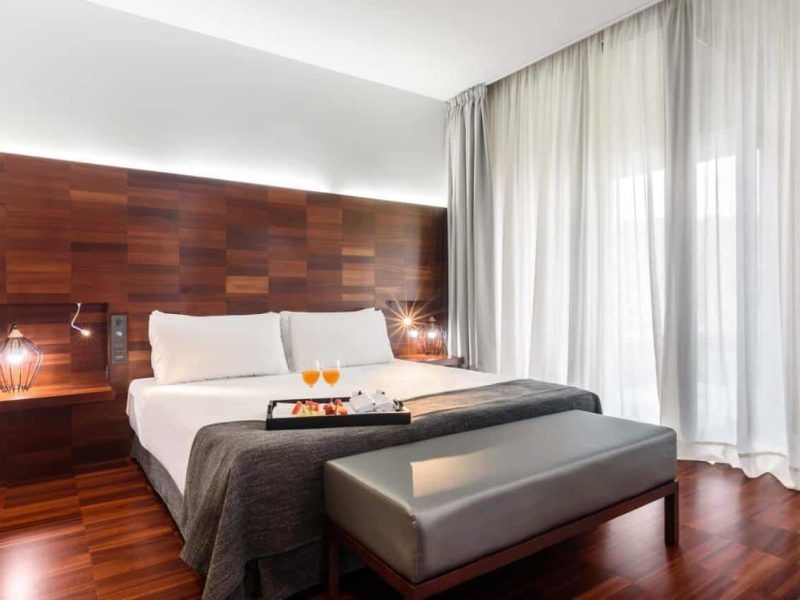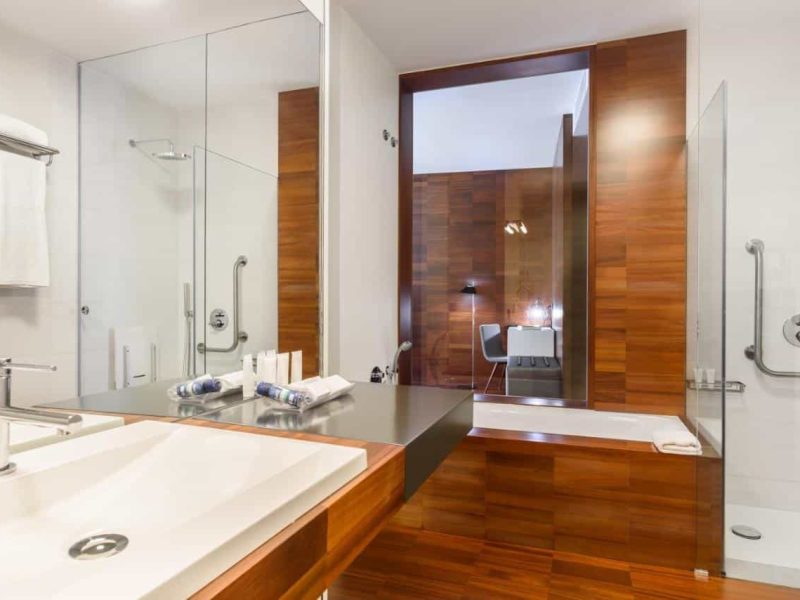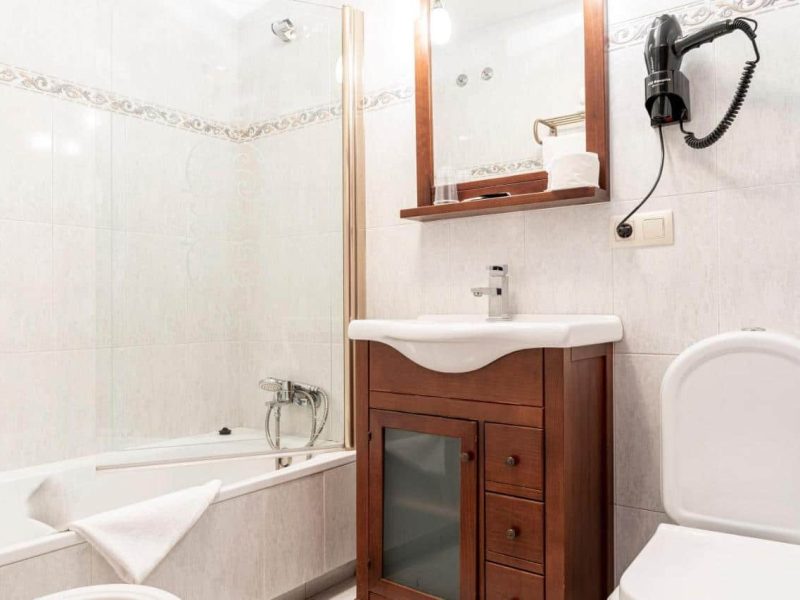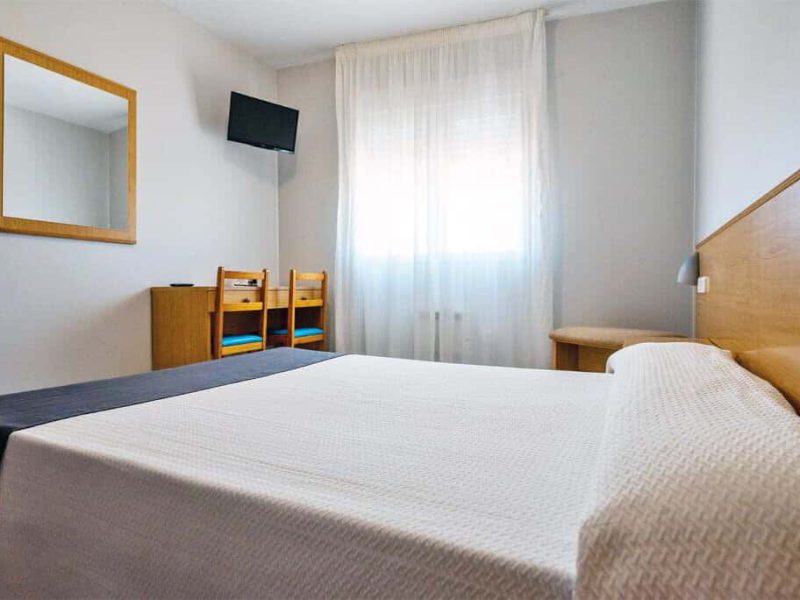Discover the Spiritual Variant
A unique journey
Way
A variant of the Central Portuguese Way or Portuguese Coastal Way is the Spiritual Variant that branches off in Pontevedra. It passes through the majestic monasteries of Poio and Armenteira and heads to Vilanova de Arousa, following the Stone and Water Way, lined with fountains, chapels, and beautifully flowing streams, known as one of the most beautiful ways in Galicia.
In Vilanova de Arousa, at the foot of the estuary that bears its name, we will embark to Pontecesures to continue the way by sea, following the same way that the remains of Apostle Santiago took on their journey to Compostela. We will sail through a natural landscape of great beauty and enjoy the only maritime-fluvial Via Crucis in the world, where we can contemplate seventeen centuries-old crosses, as well as the spectacular Torres del Oeste, which identify this Way of Saint James as the Translatio, the origin of all the ways.

More details
Origin
Vigo

Destination
Santiago de Compostela

Duration
8 days / 7 nights / 6 nights

Total Kms
108,8

Price / person
Consult
Book now!
Indicates the number of persons

services
Services
Full and customizable services for a worry-free experience on the Wey of Santiago.
Services Included
Accommodations in Hotels, Rural Houses, Hostels
Special breakfast
Travel assistance insurance in Spain
Emergency roadside assistance vehicle
Informative digital dossier on the road
On-way Telephone Assistance
Luggage transfer on the stages
✓ 1 suitcase per person, maximum 20Kgs
Transfer by boat from Vilanova de Arousa to Pontecesures.
Special gifts, including the Pilgrim's Credential, the Pilgrim's Scallop and a typical Galician product.
No cancellation fees
✓ Up to 10 days before starting the Camino
IVA
Optional Services
Transfer from Santiago Airport
1 day excursions (Bus)
✓ Finisterre (Costa da morte) and/or Rias Baixas.
Extra night in Santiago
✓ Consult Rate.
Single room supplement
✓ Consult
Additional baggage
✓ Consult rate if you bring more than 1 suitcase per person
Cancellation Insurance
Remember that the cost of the optional services chosen will be added to the base price of your route. We are committed to making your pilgrimage an unforgettable and carefree experience. Welcome to the Wey!
Stages
Discover the Wey of Santiago towards the majestic Santiago de Compostela.
Day 1: Arrival in Vigo. Lodging
Welcome to the beginning of your journey. Get ready for an unforgettable adventure!
Day 2: Stage from Vigo to Arcade (23 km)
- Duration: 6h
- Difficulty: Low
Breakfast and start of the stage.
Once we leave Vigo, the Way runs parallel to the coast until reaching Arcade.
We will follow this stage, along the Senda da Traida das Augas, from the start at Vigo, until we reach the halfway point of the stage, practically, with our sights set on the Cíes Islands in the distance, as well as the Rande Bridge and the San Simón Cove.
From Redondela, the way joins the one that links up with the Central Portuguese Way. From here, we walk towards the town of Cesantes, with permanent views of the Vigo estuary, and after 4 km, we reach Arcade, famous for its famous oysters and excellent restaurants where you can taste its seafood, putting an end to today’s stage.
Arrival in Arcade. Lodging.
Day 3: Stage from Arcade to Pontevedra (13 kms)
- Duration: 3h 15m
- Difficulty: Low
Breakfast and start of the stage
We highlight the medieval bridge of Pontesampaio, which is located at the exit of Arcade, famous for an important battle in the War of Independence, where the French troops were defeated and meant their withdrawal from Galicia). We have to be careful, because before entering Pontevedra, we have to take the fluvial way do Rio do Gafos, just after the chapel of Santa Marta, a pleasant walk that will put us at the door of Pontevedra.
Arrival in Pontevedra. End of the stage. Lodging
Day 4: Stage from Pontevedra to Armenteira (23 kms)
- Duration: 6h
- Difficulty: Medium
Breakfast and start of the stage
Starting from the Plaza de la Peregrina, in Pontevedra, after crossing the city, following the Portuguese Way and after 2 km we turn off the Central Portuguese Way, heading towards the region of Salnes, with its spectacular landscapes.
Once in the town of Poio, we will find the Monastery of Poio, which has the largest hórreo (granary) in Galicia. After visiting the Monastery of Poio, we head towards the coastline and through the Praia de Padrón we arrive at Combarro, a beautiful little fishing village famous for its arcades and hórreos (raised granaries).
From Combarro, we leave the coastline and head inland. We arrive at the Loureiro viewpoint, which offers spectacular views of the Pontevedra estuary. And we will continue until we finish our stage at the impressive Armenteira Monastery.
Arrival at Armenteira . End of the stage. Lodging
Day 5: Stage from Armenteira to Vilanova de Arousa (22,7 kms)
- Duration: 5h 30m
- Difficulty: Low
Breakfast and start of the stage
This stage begins by following the suggestive “Ruta da Pedra e da Auga”, a way along the small river Armenteira, where we find old water mills resting on the banks of the river, with small waterfalls and bridges.
It continues in a northerly direction, passing through Ribadumia and Pontearnelas, to reach the coast at Vilanova de Arousa.
In Vilanova de Arousa, you can visit the house-museum of Ramón del Valle Inclán, one of the most famous Galician-born contemporary writers in Spain, or the beautiful church of Santa María de Caleiro.
Arrival in Vilanova de Arousa. End of the stage. Lodging
Day 6: Boat transfer Stage from Vilanova de Arousa to Pontecesures
- Duration: 5h 30m
- Difficulty: Low
Breakfast and start of the stage
Transfer by boat from Vilanova de Arousa to Pontecesures and then walk from Pontecesures to Padrón (2,5 kms).
On this day, we will perform the “Translatio”, emulating the transfer that the remains of the apostle made on their final journey to Galicia, where they rest today. We will embark on a crossing of the Arousa estuary and the river Ulla, an itinerary marked by 17 crossroads, which constitute the only maritime-river Way of the Cross that exists, as well as the West Towers, which gave protection to Santiago from invasions coming from the North. We disembark in Pontecesures, where we continue on foot to Padrón, linking up with the central Portuguese Way, where today’s stage ends.
Arrival in Padrón. End of the stage. Lodging
Day 7: Stage from Padrón to Santiago de Compostela (24,6 kms)
- Duration: 6h
- Difficulty: Low
Breakfast and start of the stage.
After our stay in Padrón and Iría Flavia, places of great Jacobean evocation—according to legend, here is where the boat carrying the remains of the Apostle, coming from Palestine, ran aground on a “Pedrón” stone, which is preserved in the cathedral of that city—we head towards the end of our Way.
This stage is not as spectacular as the previous ones, as there are many asphalted tracks, and the villages are no longer as bucolic.
Despite this, we are in an area where a large part of the legend of the Apostle’s “translatio” to Santiago de Compostela took place.
Arrival in Santiago de Compostela and the end of our Way of Saint James from Vigo. Lodging.
Day 8: Breakfast. End of our services
¡Llegamos al último día de tu viaje! Disfruta de un desayuno y concluye esta inolvidable experiencia con nosotros. Thank you for being part of this adventure!
This itinerary will take you through the most popular stages, allowing you to experience the beauty and culture of the Wey of Santiago. Be sure to book accommodation in advance, as it can get crowded, especially in the high season.
Safe travels and buen Wey!
Lodging
In our constant effort to provide the best experience to our customers, we want to assure you that we are committed to your rest and comfort. The accommodations we offer have been carefully selected and provide private rooms with private bathrooms, along with all the necessary services to make the most of your stay. It is important to note that we will never put you up in hostels.
Since these accommodations have a limited capacity, we will provide you with the exact name once you confirm your reservation and we verify availability on the dates of your choice. Your satisfaction is our priority!

Frequently Asked Questions
How to get to Vigo?
We provide you with different options on how to get to your organized Way of Saint James starting from the city of Pontevedra.
Option 1: Private car and leave the vehicle parked in Pontevedra.
Option 2: Bus.
Santiago>Vigo
– From Santiago to Vigo with the company Monbus.
– From Vigo to with the company Atsa.
Madrid>Vigo
– From Madrid to Vigo with Avanzabus.
– From Vigo to with the company Atsa.
Option 3: Train (Renfe)
Option 4: Airplane
The closest airports to Pontevedra are Santiago and Vigo.
From here there are two ways to get to Vigo:
– By bus, option seen previously.
– Private transfer: pick-up at Santiago/Vigo airport and direct transfer to the hotel in Tui. Please ask us for the price of the service.
What to see and do in the spiritual variant (Travel Guide)
STAGE FROM VIGO TO ARCADE
Vigo, a coastal city, where the Vigo estuary is located and which is protected by the Cíes Islands.
We can enjoy its promenade, walk through the old town where the Cathedral is located, visit the Castro Castle and the Fortress.
STAGE FROM ARCADE TO PONTEVEDRA
Arcade, a municipality in Pontevedra known for being the “capital of oysters”.
The castle of Soutomaior, the parish church of Santiago de Arcade and the church of San Salvador are not to be missed.
Ponte Sampaio has a bridge with ten semicircular arches, as well as the church of Santa Maria, of Romanesque origin from the 12th century.
In Pontevedra, the Ponte do Burgo, which pilgrims cross on their way out of the historic centre, stands out. In the old quarter, the Sanctuary of the Pilgrim Virgin, patron saint of the city, stands out, with a scallop-shaped floor plan; inside, the carvings of Santiago, San Roque and the Virgin in pilgrim’s habit stand out.
In the Plaza de la Ferreria, which you enter through the Porta do Camiño, you will find the Convent of San Francisco next to the Plaza de la Ferreria.
Estrella, with its Casa de Caras and the Castro Sampedro Gardens.
STAGE FROM PONTEVEDRA TO ARMENTEIRA
Armenteira is a small village with great charm, where we can enjoy its beautiful landscapes, its gastronomy and tranquillity. The Monastery of Santa María de Armenteira, a must-see, is one of the most beautiful monasteries in Galicia. Dating from the 16th and 17th centuries, in Renaissance and Baroque style, it preserves the Romanesque Cistercian church dating from 1167.
STAGE FROM ARMENTEIRA TO VILANOVA DE AROUSA
In Vilanova de Arousa, the “Spiritual Variant” meets the “Way of Father Sarmiento” which, through the Translatio, makes it possible to know “the origin of all ways”.
Vilanova de Arousa, a fishing village, birthplace of the writer Ramón María del Valle-Inclán, and his house-museum, is one of the places not to be missed.
Villanova has several viewpoints: Mirador Faro das Lúas and Mirador da Cruz da Lobeira, both of which offer stunning views of the Ría de Arousa.
STAGE FROM VILANOVA DE AROUSA TO PADRON
This stage is mostly done by boat, and through the estuary we will be able to see the only maritime river viacrucis that exists in the world; as well as the western towers that gave protection to the city of Santiago de Compostela from possible invaders.
STAGE FROM PADRON TO SANTIAGO DE COMPOSTELA
In Santiago de Compostela we find the most important monument of our way, the Cathedral of Santiago, dedicated to the Apostle St. James. It was consecrated in 1128 and is a good example of a pilgrimage church. Romanesque in style, with later Renaissance and Baroque elements from the 18th century. With a Romanesque Latin cross plan, it has three naves divided by semicircular arches, a tribune, transept and ambulatory. The Pórtico de la Gloria, by the master Mateo, is the best example of Spanish Romanesque architecture.
Como tradición, todo peregrino que quiera y pueda, asiste a la misa de 12 en la Catedral. En ella, con un poco de suerte, podrá contemplar en acción el magnífico botafumeiro. Otra de las tradiciones es el abrazo a la imagen del apóstol Santiago y la visita a su cripta. Es visita obligada el museo de la misma, así como la visita a las cubiertas de la Catedral.
The Monastery of San Martín Pinario, opposite the Plaza de la Azabachería.
The façade of the Parador de los Reyes Católicos, in the Plaza del Obradoiro, which was founded as a pilgrims’ hospital.
Todo el casco antiguo es espectacular, nos traslada sin darnos cuenta a la época medieval. En él se encuentra el mercado de Abastos de Santiago. On the other hand, you can also get to know the surroundings of Santiago and go on organised excursions along the Costa da Morte and Rias Baixas.
Do you still have doubts about the Camino?
This video will give you a more detailed and visual look at what to expect on your adventure. Don’t miss it!









